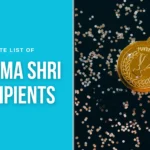Introduction: A Legend Honored with the Padma Bhushan
On a quiet evening in January 2025, Anant Nag received the news that he would be honored with the prestigious Padma Bhushan — India’s third-highest civilian award — for his monumental contributions to Indian cinema. For someone who had quietly shaped the cultural landscape of Indian film over decades, this recognition was long overdue. But behind this glittering achievement lies a story of resilience, struggle, and an unwavering passion for the craft of storytelling.
Early Life: A Humble Beginning
Anant Nagarkatte, known to the world as Anant Nag, was born on September 4, 1948, in the small village of Shirali in Karnataka. His family was deeply rooted in the traditions of Konkani-speaking Saraswat Brahmins, and life in the village was simple yet challenging. Anant’s father, a government servant, instilled the values of discipline and hard work, while his mother encouraged his creative spirit.
Growing up in a modest household, Anant was drawn to the art of performance from a young age. His first tryst with acting came through school plays, where he showed remarkable ease in slipping into different characters. However, his path to success was far from straightforward.
After losing his father at a young age, Anant had to navigate the harsh realities of life. He was sent to a boarding school in Mumbai, where the city’s chaotic rhythm contrasted sharply with the quiet pace of his village life. Despite the challenges, Anant’s passion for acting only grew stronger.
Turning Point: The Theater Years
Anant’s breakthrough came when he joined the vibrant theater circuit in Mumbai during the late 1960s. Under the mentorship of renowned theater artists, he honed his skills and mastered the nuances of stagecraft. His ability to express complex emotions with subtlety and depth caught the attention of celebrated director Shyam Benegal.
In 1974, Anant made his film debut in Benegal’s critically acclaimed film “Ankur” — a role that catapulted him into the national spotlight. His naturalistic performance stood out at a time when Indian cinema was dominated by larger-than-life characters. Benegal cast him again in “Nishant” (1975) and “Manthan” (1976), marking the beginning of a lifelong creative partnership.
“Working with Shyam Benegal was life-changing,” Anant recalled in an interview. “He taught me how to internalize a character rather than just act it.”
Struggles and Setbacks
Success in the film industry, however, came with its share of setbacks. Anant faced a phase where mainstream roles eluded him. His refusal to conform to the typical “hero” image meant that commercial offers were rare.
Instead of compromising his artistic integrity, Anant took refuge in regional cinema. His return to Kannada films in the 1980s redefined the industry. Films like “Ganeshana Maduve” and “Minchina Ota” became cult classics, making him a household name in Karnataka.
Financial difficulties also crept in during this period. In one interview, Anant’s wife, Gayatri, shared how they had to sell personal belongings to keep their home running. “There were days when we didn’t know how we’d manage the next month’s rent,” she admitted.
Anant, however, remained undeterred. “Acting is not just my profession — it’s my purpose,” he said.
The Comeback: Rediscovering Stardom
The 1990s marked a resurgence for Anant Nag. His role in the television series “Malgudi Days” (directed by his brother Shankar Nag) remains etched in the memories of Indian audiences. His performances in socially relevant films like “Godhi Banna Sadharana Mykattu” (2016) and “KGF: Chapter 1” (2018) introduced him to a new generation of fans.
Directors began to seek him out for his ability to bring gravitas and depth to any role. In “KGF,” his portrayal of a calculating politician showed that even after decades in the industry, Anant Nag had lost none of his edge.
Padma Bhushan Honor: A Moment of Vindication
When the Padma Bhushan was announced in 2025, Anant Nag was in his garden tending to his plants. The call from the Ministry of Home Affairs came as a surprise.
“I never worked for awards — I worked for the love of cinema,” Anant said humbly after receiving the news. “But this honor feels like a validation of my journey.”
At the ceremony, Anant was accompanied by his wife and daughter. As he walked up to receive the award from the President of India, the auditorium erupted in applause. The man who once struggled to make ends meet was now standing at the pinnacle of artistic achievement.
Legacy and Influence
Anant Nag’s influence on Indian cinema extends beyond his films. He has mentored numerous actors, spoken openly about the need for artistic integrity, and championed the cause of regional cinema.
Many of today’s leading Kannada actors cite Anant Nag as an inspiration. “His approach to acting and his respect for the craft is what sets him apart,” said actor Yash in a recent interview.
Film critic Anupama Chopra summed it up perfectly:
“Anant Nag is not just an actor — he’s a movement. His work reminds us that cinema is not about spectacle, but about soul.”
Interesting Facts About Anant Nag:
✅ Anant Nag is fluent in Kannada, Konkani, Marathi, Hindi, and English.
✅ He once declined a high-paying Bollywood role to focus on Kannada films.
✅ He served as a Member of the Karnataka Legislative Assembly in the early 2000s.
✅ He is one of the few actors to have excelled equally in art-house cinema and commercial films.
Conclusion: A Life Well Lived
Anant Nag’s journey is a testament to the power of perseverance and artistic integrity. From a small village boy with big dreams to a Padma Bhushan awardee, his story is an inspiration to every aspiring artist.
“Success is not about the destination — it’s about the journey.” And Anant Nag’s journey has been nothing short of extraordinary.
🌟 What’s your favorite Anant Nag performance? Share your thoughts in the comments!






